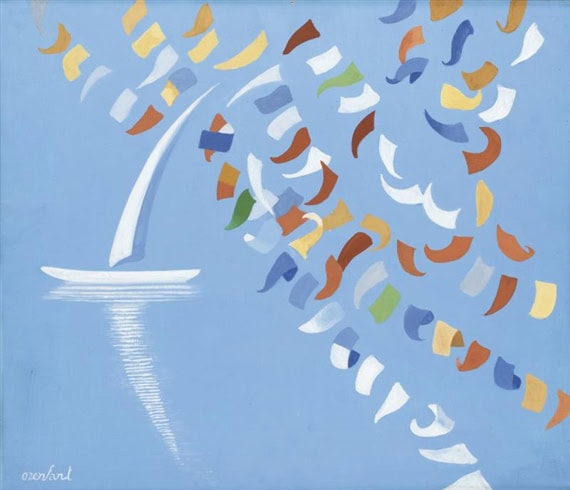Amédée Ozenfant (1886–1966) was a French painter and theorist known for co-founding Purism, an art movement that sought to bring order and clarity to modern painting.
While he is not as widely known as some of his contemporaries, he created several influential works.
Here are 15 notable paintings by Ozenfant:
Here are more in-depth descriptions of 15 notable paintings by Amédée Ozenfant, elaborating on their composition, artistic philosophy, and significance.
1. Le Pichet Blanc (The White Pitcher)
This painting epitomizes Ozenfant’s Purist style, featuring a stark white pitcher against a muted background. The carefully balanced composition highlights the interplay between light and shadow, emphasizing the vessel’s cylindrical shape and smooth texture.
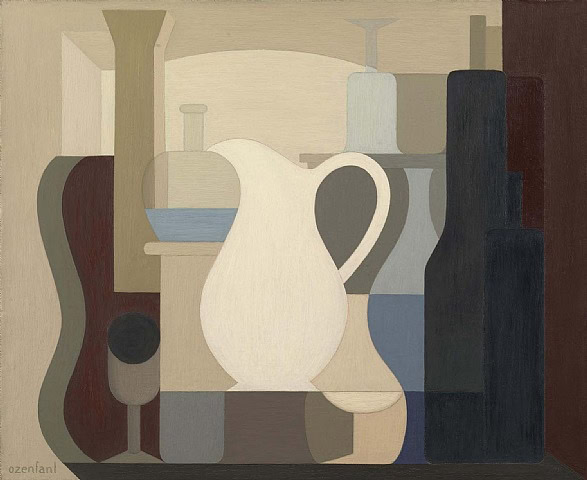 The simplicity of the subject matter conveys a sense of harmony and precision, reinforcing Purism’s focus on order and clarity.
The simplicity of the subject matter conveys a sense of harmony and precision, reinforcing Purism’s focus on order and clarity.
2. Nature Morte (Still Life)
A quintessential still life in which everyday objects, such as bottles, glasses, and containers, are arranged with mathematical precision.

The restrained color palette and smooth, well-defined forms reflect Ozenfant’s belief that art should mirror the functional beauty of industrial design. The objects appear timeless and idealized, as though purified from the distractions of unnecessary detail.
3.Nature morte au verre de vin rouge (Still Life with Glass of Red Wine)
Ozenfant explores the contrast between solid and transparent materials by positioning a glass bottle alongside a drinking glass.
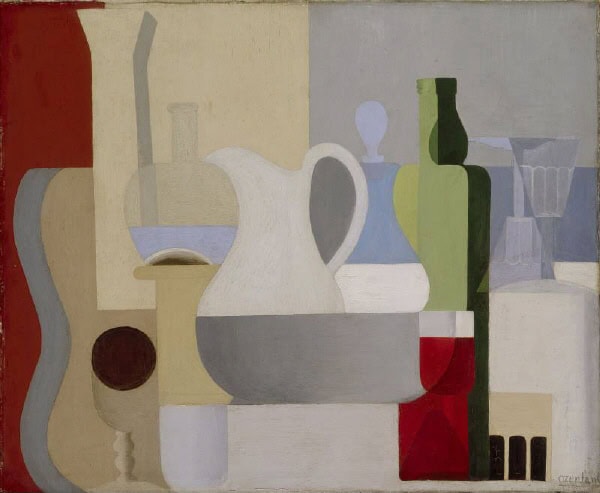 The careful rendering of reflections and refractions demonstrates his mastery of tonal variation. The painting exemplifies Purism’s insistence on depicting objects in their most refined, essential forms.
The careful rendering of reflections and refractions demonstrates his mastery of tonal variation. The painting exemplifies Purism’s insistence on depicting objects in their most refined, essential forms.
4. Le Verre (The Glass)
A single glass, stripped of decorative elements, is the sole focus of this composition. Through subtle shading and controlled lighting, Ozenfant transforms an everyday object into an icon of simplicity and modernist elegance. The painting emphasizes materiality, light interaction, and the purity of form.
5. Guitare et Bouteille (Guitar and Bottle)

This still life juxtaposes a musical instrument with a bottle, bridging the worlds of art and industry. Ozenfant’s approach to composition eliminates unnecessary embellishment, emphasizing the underlying geometric structure of each object.
The painting conveys a quiet, harmonious atmosphere, underscoring the Purist movement’s emphasis on clarity and functionality.
6. Nature Morte au Livre (Still Life with Book)
A book is included among the carefully arranged objects, introducing an element of intellectual symbolism. The painting conveys the idea that literature, like design, follows principles of order and structure.
The choice of a book as a subject suggests a reverence for knowledge and balance in both artistic and intellectual pursuits.
7. Maternity
Maternity by Amédée Ozenfant is a striking example of the Purist movement, which he co-founded alongside Le Corbusier.
The painting embodies Ozenfant’s signature approach—clean, geometric forms, a restrained color palette, and a deep sense of balance and order.
The composition likely presents the theme of motherhood through a modernist lens, reducing the human form to essential shapes and harmonious proportions. 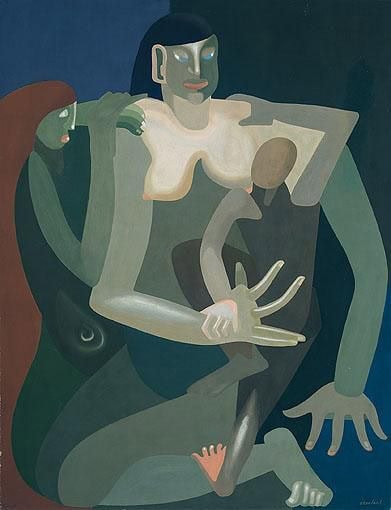
The use of soft yet structured curves might suggest nurturing and protection, while the interplay of light and shadow enhances the sense of depth and purity.
By stripping away unnecessary detail, Ozenfant conveys the universality of maternity, aligning it with his belief in simplicity and clarity as the foundations of aesthetic beauty.
Through Maternity, Ozenfant transforms an intimate, timeless subject into an expression of modern harmony, highlighting the intersection of human experience and artistic idealism.
The painting stands as a testament to his Purist vision—where form and function merge seamlessly to evoke emotion and meaning.
8. Adam at Eve
“Adam at Eve” by Amédée Ozenfant is a refined exploration of form, balance, and purity, reflecting the core principles of the Purist movement.
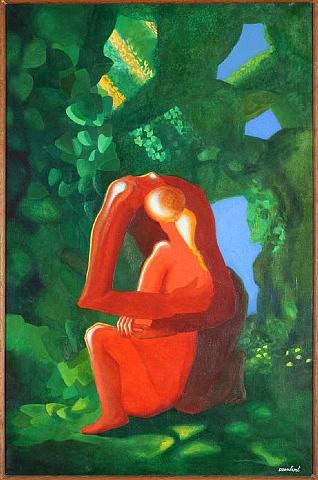
9.Pacifique III
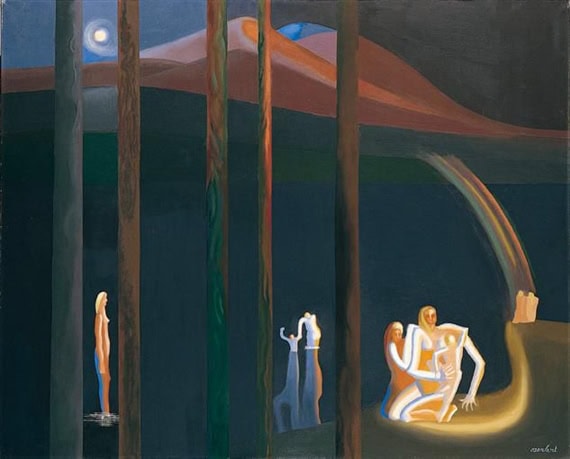
“Pacifique III” is a striking representation of Ozenfant’s dedication to form, structure, and harmony. The painting likely features a composition dominated by simplified geometric shape, carefully arranged to evoke a feeling of stability and balance
10. Nature Morte Puriste (Purist Still Life)
This painting serves as a manifesto of Purism, featuring an assortment of bottles, glasses, and pitchers arranged in an orderly manner.
The objects are depicted with smooth surfaces and well-defined contours, stripped of decorative excess. The emphasis on geometric precision and clean lines reflects Ozenfant’s commitment to the ideals of modernity and simplicity.
11. Le Vase (The Vase)
A single vase dominates the canvas, its elegant shape highlighted through careful attention to light and shadow.
Ozenfant’s focus on essential forms makes the vase appear timeless, as though it were a mass-produced yet perfectly designed object.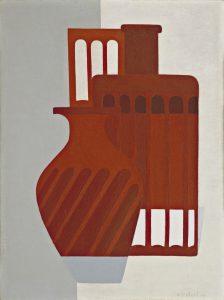
The restrained color palette reinforces the painting’s sense of clarity and sophistication.
12. Nature Morte à la Carafe (Still Life with Carafe)
A carafe is placed among other domestic items, emphasizing its transparency and curvature. Ozenfant carefully studies how light interacts with the glass surface, demonstrating his mastery of rendering different materials. The painting captures a moment of stillness, with each object carefully positioned to achieve visual balance.
13. Duplicate
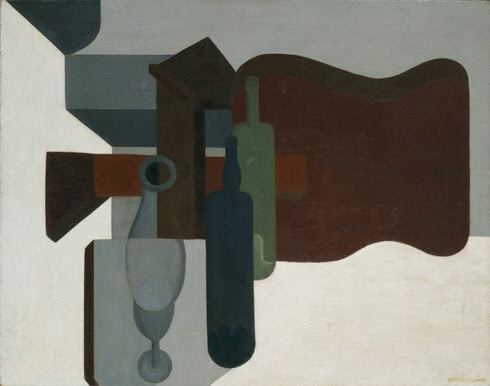
This work embodies the principles of Purism through an arrangement of objects that adhere to strict geometric proportions. The smooth, polished surfaces and calculated spacing between objects convey a sense of order and clarity. Ozenfant’s controlled use of color and shading enhances the sense of depth and material realism.
14. Composition Purist

This artwork demonstrates Ozenfant’s focus on presenting objects clearly, emphasizing their essential form and function.
15. Sisteron
Ozenfant created the notable painting “Sisteron” in 1928. It showcases his characteristic style, emphasizing clarity and precision.
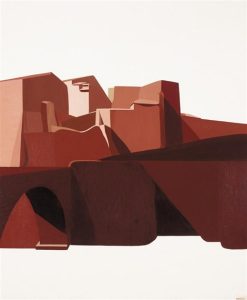
Conclusion
Ozenfant’s paintings are a testament to the Purist movement’s principles, emphasizing clarity, order, and the beauty of everyday objects. By stripping away unnecessary details and focusing on form, light, and structure, he sought to create art that was both intellectually rigorous and visually harmonious. His work influenced modern design, architecture, and art theory, leaving a lasting impact on 20th-century aesthetics.
The article contains sponsored affiliate links from Amazon to valuable resources.


